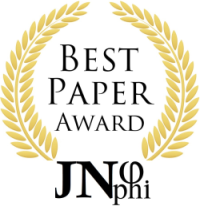Integrated Information Theory 4.0 is both Weakly Panpsychist and Strongly Dualist, but many Theories of Consciousness are also Prone to It
Abstract
Since its first formulation the Integrated Information Theory (IIT) has recently been updated to the version 4.0. Unlike the previous versions where the problem of free will was completely neglected, IIT 4.0 claims to suggest a full neuroscientific account of this oldest problem in the philosophy of mind. The aim of this opinion paper is to show that IIT’s account of free will is apparently dualist and reminiscent of the conventional free will in folk psychology, where mental constructs such as beliefs and desires are regarded as actual causes of human actions. On the other hand, these mental constructs can have high predictive power, compared to that provided by neuroscience. Thus, while rejecting ontological dualism, one can accept methodological dualism, compatible with eliminative physicalism, by virtue of its predictive power and descriptive parsimony.
Downloads
Metrics
References
Albantakis L, Barbosa L, Findlay G, Grasso M, Haun AM, et al. Integrated Information Theory (IIT) 4.0: Formulating the Properties of Phenomenal Existence in Physical Terms. 2023. arXiv:2212.14787
Bedau MA. Weak emergence. Nous 1997; 31(11):375–399.
Block N. On a confusion about a function of consciousness. Behav Brain Sci 1995; 18:227-287.
Cea I, Negro N, Signorelli CM. The Fundamental Tension in Integrated Information Theory 4.0’s Realist Idealism. Entropy 2023; 25:1453.
Dehaene S, Naccache L. Towards a cognitive permanence of consciousness: basic evidence and a workspace framework. Cognition 2001; 79:1–37.
Downloads
Published
How to Cite
Issue
Section
Categories
License
Copyright (c) 2024 Sergey B. Yurchenko

This work is licensed under a Creative Commons Attribution-NonCommercial-ShareAlike 4.0 International License.
Authors continue to hold copyright with no restrictions.














